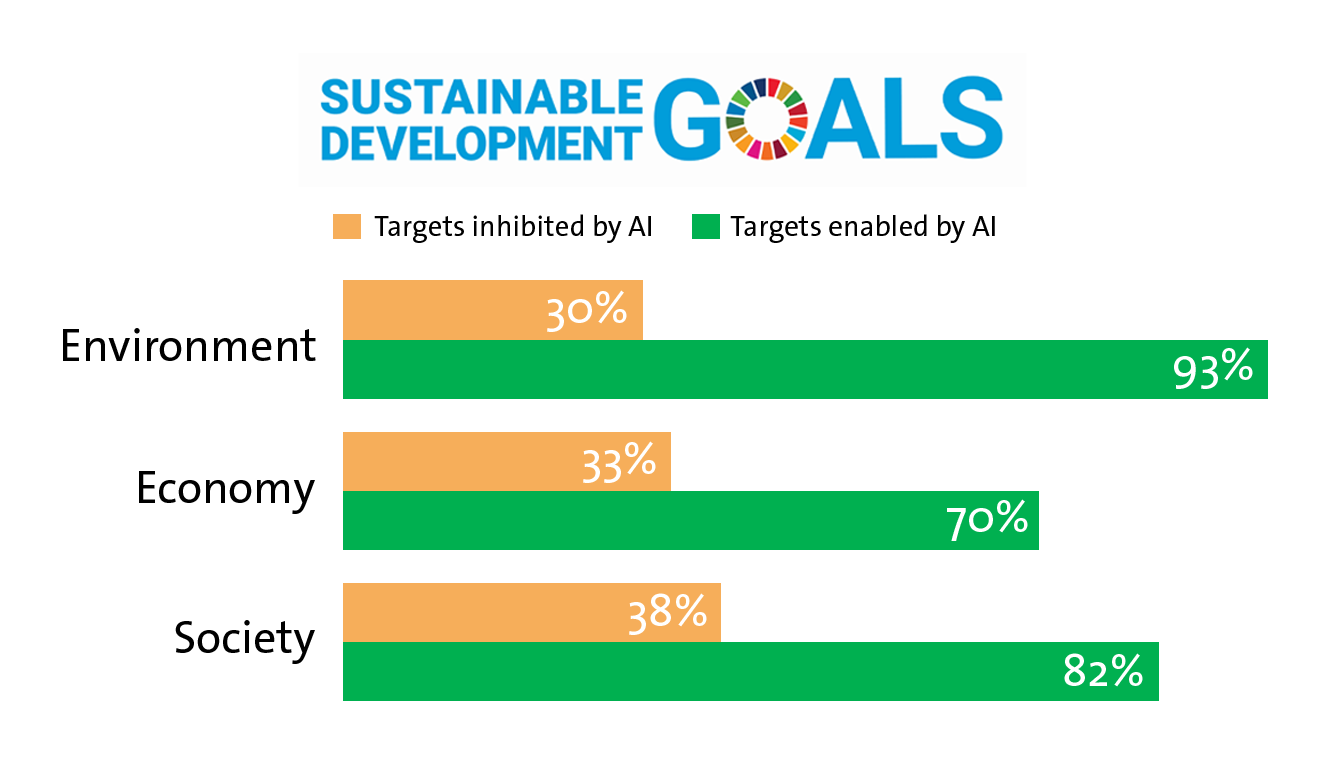Using the Sustainable Development Goals to understand and guide AI
Published in Sustainability

Shortly after the adoption of the 2030 Agenda for Sustainable Development in 2015 the research community mobilized to understand how to use the detail provided in the 17 Sustainable Development Goals and their 169 targets for directing research, policies and projects.
A new field of research appeared: using the SDGs as a lens to analyze and understand, in-depth, a variety of topics. Among others, recent studies have looked at how to frame the future of energy, water, food systems and infrastructures, as well as climate policy, so that they are aligned and support the achievement of the SDGs. New applications are trying to mainstream the Global Goals into the framing and coordination of national policies and strategic projects. Used pragmatically*, the SDGs provide a powerful lens for looking at diverse topics in light of internationally-agreed sustainable development priorities. (*conscious of their political nature, and without overlooking other complementary international frameworks, such as United Nations Universal Human Rights Charter and the Paris Agreement).
Similarly, when we decided to assess the current and future impacts of AI on our world, we decided to do so through the SDGs lens. Having learnt from our previous efforts in the field, we assembled an authoring team able to assess both the breadth and depth of knowledge on the potential implications of AI on sustainable development. Mapping topics to expertise and reaching out to our extended networks resulted in our current authoring team, with a wide-ranging expertise from the technical applications of AI and machine learning to the understanding of the social sciences behind AI´s societal impacts.
The resulting Perspective, published in Nature Communications, shows the pervasive implications that AI has, and will have, on everyone´s lives across all sustainable development dimensions. We found that AI may act as an enabler on 134 targets (79%), across all SDGs, generally through technological improvement which may allow us to overcome certain present limitations. However, 59 targets (35%, also across all SDGs) may experience a negative impact from the development of AI.

One example is the potential impact of AI on the energy and climate transition. AI can potentially enable smart and low-carbon societies, encompassing a range of interconnected technologies such as electrical autonomous vehicles and smart appliances that can automatize demand response in the electricity sector. AI can also help to integrate variable renewables by enabling smart grids that partially match electrical demand to times when the sun is shining and the wind is blowing. However, at the same time, AI can have large effects on the global energy demand. Advanced AI technology, research and product design may require massive computational resources only available through large computing centers. Some estimates suggest that the total electricity demand of information and communications technologies (ICT) could require up to 20% of the global electricity demand by 2030, from around 1% today. Furthermore, the increased digitalization of strategic infrastructure presents some clear cybersecurity challenges.
By collecting evidence on the impacts that AI might have on the SDGs, we understood that we still know little about the topic. Published research is biased towards positive impacts of AI and has a limited geographical coverage. We also understood that while a wide range of new technologies are being developed very fast, neither individuals nor governments seem able to follow the pace of these technological developments. Uncontrolled and poorly understood AI developments could increase societies´ inequalities and political polarization. Our analysis provides a view of the most urgent research gaps to fill and the needed policy and legislative frameworks, to help direct the vast potential of AI towards the highest collective benefit.
Once again, this type of global-level study of a topic through the SDG-lens proves very useful to understand the key actions needed from the research and policy communities. It is also a way to collect the evidence-base to understand the investigated issue. However, the work should not stop here. Our upcoming research looks at using the global-level knowledge collected in similar studies for directing decisions at the local level. That includes the development of tools to evaluate the impact of infrastructure projects on the local attainment of the SDGs, and the use of local studies to coordinate decision making on SDGs policy at the national and municipal level. Corresponding research efforts are needed to “downscale” the analysis of this Perspective to AI projects and strategies at local, national and regional level.
You can read the Perspective here.
Follow the Topic
-
Nature Communications

An open access, multidisciplinary journal dedicated to publishing high-quality research in all areas of the biological, health, physical, chemical and Earth sciences.
What are SDG Topics?
An introduction to Sustainable Development Goals (SDGs) Topics and their role in highlighting sustainable development research.
Continue reading announcementRelated Collections
With Collections, you can get published faster and increase your visibility.
Clinical trials 2025
Publishing Model: Open Access
Deadline: Dec 31, 2025
Women's Health
Publishing Model: Hybrid
Deadline: Ongoing



Please sign in or register for FREE
If you are a registered user on Research Communities by Springer Nature, please sign in